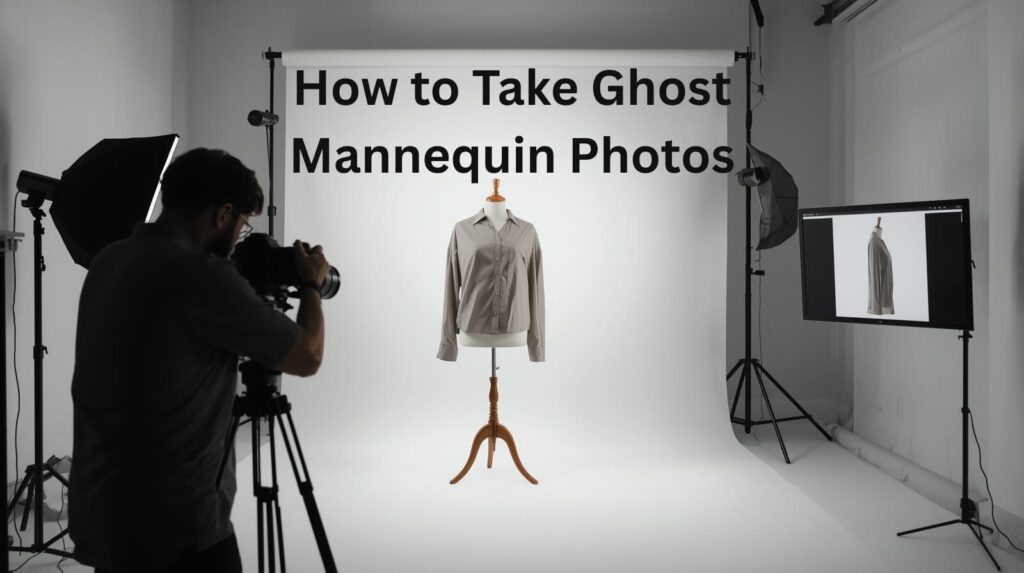As we all know, first impressions truly matter in e-commerce and online marketing. And here, product photography has the main role. However, generally, there are many ways for professional product photography. But among all the photography techniques, white background in product photos is the standard one.
Well, that also has many well-proven reasons. They make products look clean and feel professional. Moreover, they help the customers to focus on the details of the focus. Ultimately, it enhances sales. There are many more reasons behind using a white background for professional product photography. Let’s get to know it comprehensively in today’s guide. Just read on.
Why White Backgrounds Are Important For Product Photography?

Well, as we already gave you a hint that when it comes to professional product photography, white backgrounds are the standard choice. There are many more reasons behind this. Check it out below.
1. They look clean and professional
First of all, white backgrounds create a clean and free of distractions background for your product. When you place your product against a white background, it automatically directs all the attention towards the product. This type of clarity helps the customers to see the actual shape and details of your products. That even also possible without any interference from any unwanted surroundings.
That is not it!
A clean white background also shows your professionalism and quality. It makes your products look more premium and trustworthy. Ultimately, it helps to build customer confidence in your products. That is especially true when you are selling your products on online stores, and your customers cannot touch the product before purchasing.
2. They contribute to consistency across platforms
Secondly, you can maintain consistency among your product images with white backgrounds. When you use white backgrounds for all your product images, it creates the same visual style. It is especially helpful when your products are listed on multiple platforms. For instance, websites, marketplaces, social media, and advertising channels.
So, obviously, it allows your customers to recognize your brand immediately. It also ensures your product images meet platform guidelines and reduces the risk of rejection. On top of that, you can ensure your product catalogs look organized and professional when every product image has the same background.
Here is a quick overview of the benefits of white backgrounds.
| Platform or Use Case | Why White Background Matters | Advantage |
| E-commerce Websites | It keeps product pages consistent | It improves overall brand presentation |
| Marketplaces like Amazon, Etsy, and eBay | It meets platform image requirements | It avoids listing rejection and ensures visibility |
| Social Media Marketing | It creates an impressive visual feed | It strengthens brand recognition |
| Advertising Campaigns | It maintains focus on the product | It enhances click-through and engagement |
| Print Catalogs or Brochures | It standardizes the product’s look | It reduces retouching effort and production time |
3. More details, ultimately, better conversion rates
White backgrounds also help to enhance customer understanding of your product. You know, with white backgrounds, every detail of your products becomes visible. So, your customer can clearly see the shape, texture, and features of your products. It ensures your customers can understand what they are buying and reduces misunderstandings.
That does not end here!
Clear and detailed product images on a white background also reduce product returns. When your customers know what they are buying, they are less likely to become dissatisfied with your products. Your clear product image builds trust and encourages your customers’ buying decisions.
4. Instant attention and focus
Product images on white backgrounds can naturally attract the attention of the customer directly to the product. Your customers can focus on the true details of the products. That is especially true for small or intricate products.
White backgrounds also help photographers to control lighting and shadows. It makes the product stand out even more. On top of that, the simplicity of a white background also ensures a cleaner composition and makes images easier to scan. Ultimately, it can lead to higher engagement for your customers.
5. Accurate product color representation
You may already know that the neutral white does not reflect colors. So, it helps the product to appear with the exact color as it has in real life. Moreover, a white background also makes it easier to manage lighting and white balance during photography. It reduces the risk of color casts from surrounding backgrounds.
What’s the benefit?
Accurate color presentation builds trust with customers. It reduces the chances of returns due to color mismatches. When your customers know that they are getting what they are seeing on your product feed, it enhances their confidence to buy your product even online.
6. Prevents color mismatches
Coming to the next benefit of a white background in professional product photography. You know white background also reduces the risk of color mismatches in your product images.
That also has a good explanation.
You know, colored backgrounds can reflect light onto the product. So, it creates unwanted tints or shadows. These changes can make the product appear different in photos. That is especially true when you are taking multiple images in different lighting conditions.
But that is the opposite with a white background. Here, the photographer can ensure the true color of the products when they are capturing the images.
On top of that, white backgrounds prevent color mismatches. So, it helps to reduce returns and complaints, saving time and costs for businesses. It also contributes to a professional brand image for its reliability and quality.
7. Helps in building brand image
A white background in product photography can also help to build your brand’s visual identity. When every product image shares the same white background, it creates a consistent brand image. Your customers can immediately recognize your brand. Moreover, it shows your professionalism in the ecommerce business.
A white background also makes the work easier for photographers and designers. They can use standard lighting setups and camera settings. Ultimately, it reduces variability between shoots.
8. Quicker product launches
You can ensure faster production and quicker launches of your product photography with white backgrounds. As a white background is neutral and distraction-free, photographers need less time to adjust backgrounds or settings. It makes the shooting and post-processing steps easier.
That’s not it! You know you can edit your product images faster with a white background. It takes less time to remove shadows, correct colors, and prepare images for multiple platforms. Ultimately, it ensures quick product launches and that products can reach customers more quickly.
9. Helps in integration with multiple platforms
You can use the product images on a white background on different platforms. It meets the platform requirement for an e-commerce store, marketplace, social media, or advertising campaign. On top of that, Amazon, eBay, Etsy, and Google Shopping strongly prefer white backgrounds for main product images.
10. Suitable for 360-degree product shots
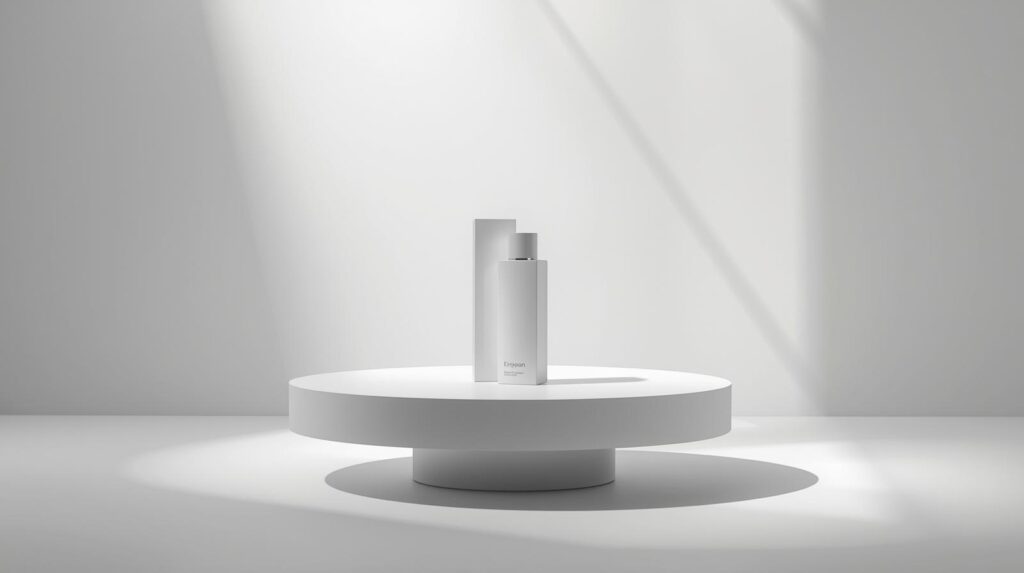
White backgrounds are suitable for 360-degree product photography. That is because they provide a neutral environment and ensure consistency from every angle. When you photograph your products from multiple perspectives, a white backdrop prevents background colors from interfering with the appearance of the product.
Moreover, a white background helps to control light and shadow throughout the rotation. You can minimize shadows and reflections with a white background. It is essential for interactive 360-degree images.
11. Makes editing easier
White backgrounds make post-processing and image editing easier. That is because the background is neutral and uniform. So, editors can quickly isolate the product for adjustments. For instance, color correction, brightness, contrast, or background removal.
A white background also reduces complexity for clipping paths or masking. It allows designers to produce high-quality images faster with greater accuracy. It also minimizes errors like halo effects, color contamination, or unwanted shadows.
12. Smaller image file sizes
White backgrounds help reduce image file sizes. You know large areas of uniform color compress more efficiently than complex backgrounds. That is why it results in smaller files.
There are many more benefits of smaller file sizes.
- Smaller images load faster on websites and marketplaces
- It improves page performance and user experience.
- Faster-loading pages can lead to higher engagement
- It has lower bounce rates and better SEO rankings.
- For e-commerce businesses, smaller files also reduce storage costs
- It makes it easier to manage large product catalogs.
Here is a quick overview of a white background with complex backgrounds
| Product Type | Image Resolution | White Background File Size | Complex Background File Size | Compression Efficiency |
| T-Shirt | 2000 × 2000 px | 180 KB | 450 KB | 60% smaller |
| Electronics | 1500 × 1500 px | 120 KB | 320 KB | 62.5% smaller |
| Jewelry | 1000 × 1000 px | 80 KB | 210 KB | 62% smaller |
13. Makes products look larger and brighter
As we already mentioned, white backgrounds naturally reflect light. It enhances the appearance of the products. Moreover, this reflection makes items look brighter and cleaner. On top of that, small products look larger in a white background.
Why White Backgrounds Are the Standard for E-Commerce Product Photos
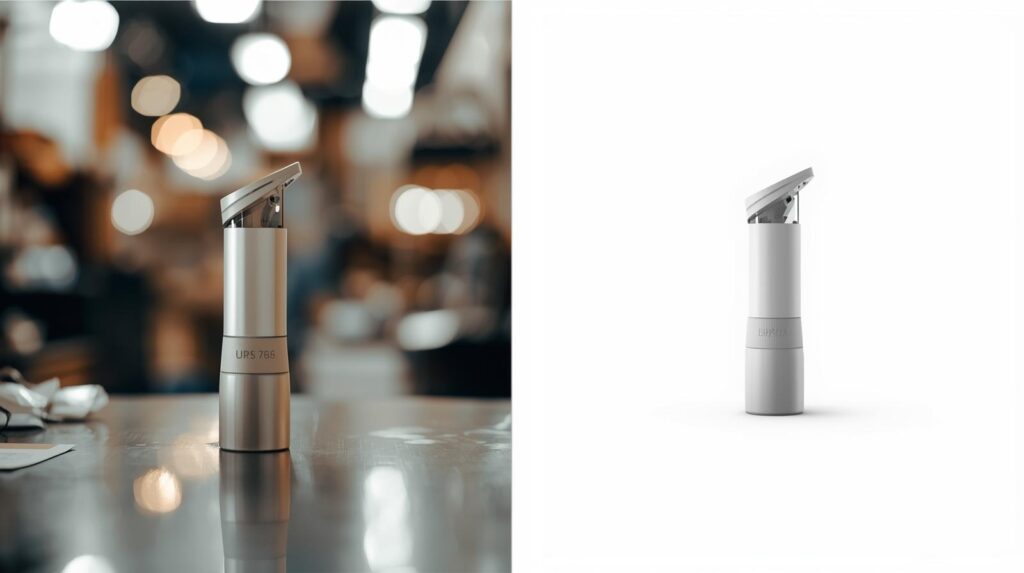
In simple words, white backgrounds are a requirement in e-commerce platforms. Here is a quick overview.
- Amazon: Amazon requires the main product image to use a pure white background (RGB 255, 255, 255).
- Other Marketplaces: According to Commerce3D, many major platforms like Walmart also recommend or require a white background to maintain a consistent brand presentation.
That’s not it.
- White backgrounds help increase conversion rate by up to 23% than colored backgrounds.
- Amazon’s systems favor images with pure white backgrounds because they help the algorithm detect the product clearly.
- A single and compliant image can be used for listings, social media, ads, and catalogs.
Marketplace Image Requirements
| Marketplace / Platform | Main Image Background Requirement | Notes / Tips |
| Amazon | Pure white | Required for main image. No text, logos, borders, or props. |
| eBay | Clean and uncluttered background recommended | White is preferred for product clarity, though not strictly required |
| Etsy | Background should not distract from the product | White or neutral backgrounds improve professionalism and customer focus. |
| Walmart Marketplace | White or neutral backgrounds are recommended | The main product image must clearly show the product without distractions. |
| Google Shopping | White or neutral background preferred | Background should not distract from product; important for ads and listings. |
| Shopify or Own Website | Flexible but white backgrounds are recommended | Ensures consistency across the website, marketing, and ads. |
How White Backgrounds Improve Conversions and Sales
White-background product photos also help to enhance conversions and sales. The reason is simple! They enhance trust and perception of product quality. Here are some reasons.
- Small businesses that use high-quality and clear product images have a 33% higher conversion rate.
- High-quality product photography can increase e-commerce conversions by up to 30%.
- White-background images reduce product returns as they help customers understand exactly what they are buying.
- Product images, especially on white backgrounds, build consumer trust and tend to convert better.
- Product images with white backgrounds make it easier for customers to compare products, improving their confidence in your products.
- Clean white backgrounds maintain clarity and readability even on small mobile screens.
- Faster-loading and well-optimized white-background images also improve the mobile shopping experience.
Drawbacks Or Limitations Of White Backgrounds
While white backgrounds offer many advantages. However, it also has limitations. For instance,
1. Product images can look flat
A plain white background can make images feel less engaging. That is especially for lifestyle or luxury products.
2. Challenging for reflective or transparent products
Products like glassware, jewelry, or shiny electronics can produce unwanted reflections on white backgrounds. You may often need special lighting setups and diffusers to manage this.
3. Risks of overexposure
White backgrounds can easily be overexposed during photography. It may wash out details in light-colored products. Here, you will need careful lighting and camera settings.
When Not To Use White Backgrounds
Well, as you see, using white backgrounds for professional product images may not be suitable in some cases. Check it out below to know when you should use white backgrounds for professional product images.
| Scenario or Product Type | Reason to Avoid White Background |
| Luxury or Lifestyle Products | White backgrounds can feel sterileIt may fail to convey the mood or context essential for premium branding |
| Products Requiring Environmental Context | Home décor, furniture, or outdoor gear. Here, you should use lifestyle or contextual backgrounds to show usage |
| Highly Reflective or Transparent Products | Glassware, jewelry, and electronics can produce unwanted reflections or glare. They are harder to manage against white backgrounds. |
| Artistic or Creative Photography | If your goal is to create a dramatic effect and a creative composition, you should avoid using white backgrounds. |
| Products with Very Light Colors | Light-colored products may blend into a white background. It can make details harder to see without careful lighting. |
Techniques And Tips for White Background Product Photography
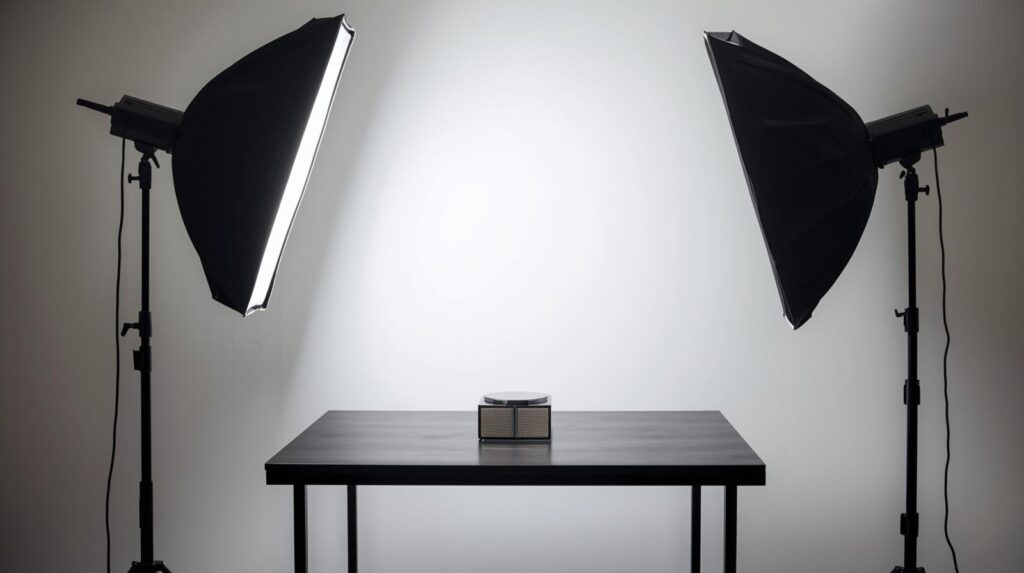
You can ensure high-quality and professional product images on a white background by following some simple tips. What are they? Let us check it out below.
1. Use proper lighting
You can use proper lighting to remove shadows. You should use soft and even lighting. They help to highlight product details. You can also use natural light or softbox lighting to achieve a clean look. Just ensure to avoid harsh light directly on the product. It can create glare.
2. Maintain correct white balance
You need to maintain correct white balance when you are having product photography. It helps to ensure accurate color representation.
3. Keep the background smooth
If you are using white paper or white fabric as a white background, ensure that it has no wrinkles or folds. That is because it can create a distraction from the product. That is why you should use smooth white paper rolls or professional white backgrounds for a clean look.
4. Shoot at multiple angles
You should capture product shots from different angles on the white backgrounds. It helps to show all the features of the products. That is why you should combine front, side, close-up, and 360-degree views for a comprehensive presentation of your product.
5. Use a tripod
You can also use a tripod when you are clicking product images on white backgrounds. It ensures sharp and consistent images. Moreover, it makes it easier for you to click batch photos of the products.
6. Post-processing
You should always keep in mind that a small edit in the product photography can enhance the final image. That is why, after clicking the images, you should adjust exposure and remove shadows.
Moreover, you have to ensure the background is pure white. In these cases, you can use tools like Photoshop, Lightroom, or AI-powered editors. These tools can help speed up the editing process.
Tools Recommendation For Shooting and Editing White Background Product Photos
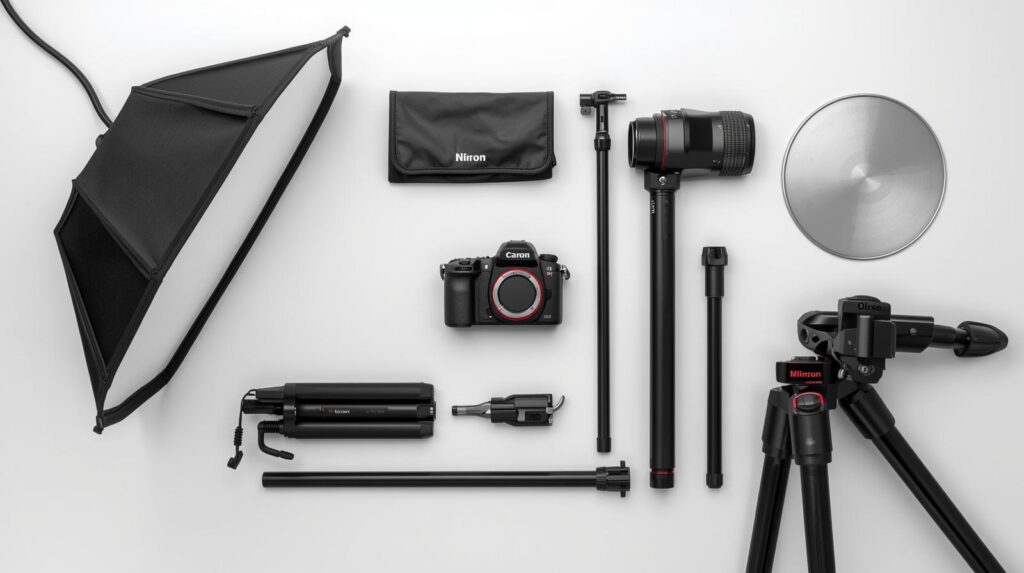
Well, now let us quickly check out what tools you should use to ensure professional product images on a white background.
| Tool or Category | Purpose | Recommended Options / Notes |
| Camera | Capture high-quality and detailed images | DSLR or mirrorless cameras like Canon EOS R6, Sony A7 III, Nikon Z6.You should use the RAW format for better post-processing. |
| Lighting | Even illumination and reduce shadows | Softboxes, LED panels, ring lights.You should consider an adjustable color temperature to match product requirements |
| Backdrop or Studio | Clean and uniform white background | White paper rolls, collapsible white photo tents, or professional studio backdrops.You have to ensure a wrinkle-free setup |
| Tripod or Stabilizer | Maintain sharp and consistent shots | Adjustable tripod with level adjustment. It is essential for 360° product photography |
| Editing Software | Post-processing, color correction, and background cleanup | Adobe Photoshop, Lightroom, Capture One, or AI tools like remove.bg for background removal and touch-ups |
| Reflectors or Diffusers | Control light and reduce shadows | White, silver, or translucent reflectors to soften shadows and enhance product visibility |
Final Thoughts
Well, all in all, a white background is the golden standard of choice in almost all cases of professional product photography. Of course, that is also because they offer many more benefits in product photography.
That is also true that white backgrounds are not suitable for every creative or lifestyle photography. However, they are essential for e-commerce, marketplaces, and catalogs. You have to use proper lighting, camera settings, and post-processing tools to produce high-quality images. You can also collaborate with a professional product photography company, like Clipping Path CA, to ensure high-quality product images on white backgrounds.




